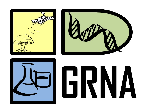Banca de DEFESA: TATIANA ANDRÉA LOBATO VIEIRA
Uma banca de DEFESA de MESTRADO foi cadastrada pelo programa.DISCENTE : TATIANA ANDRÉA LOBATO VIEIRA
DATA : 18/12/2019
HORA: 14:30
LOCAL: Sala 103 - Campus Amazônia
TÍTULO:
...
PALAVRAS-CHAVES:
Forest fragments. Vegetation structure. Abundance. Basal area. Diametric classes.
PÁGINAS: 54
GRANDE ÁREA: Outra
ÁREA: Ciências Ambientais
RESUMO:
Temporal changes in abundance, basal area and distribution of diametric classes were fundamental properties to characterize the dynamics of a forest. The objective of this study was to characterize structural patterns of forest fragments in Alter do Chão - PA. Changes in abundance, basal area and distribution of diametric classes were observed in areas of forest fragments in Alter do Chão compared to data collected in the 1990s by INPA researchers. At the same time, we analyzed the structural variations that occurred in this vegetation in the twenty-year interval, considering factors such as fire and fragment size as agents of change. The study area is located between the city of Santarém and the district of Alter do Chão, in the state of Pará. Between 1998-2001, each forest fragment (FF) and continuous forest (MC) was allocated to 4 subplots of 2 x 250m (2000m2) and an inventory of tree individuals with a diameter of 1.30 cm from the soil (DAP) was made ≥ 1 cm. These areas were evaluated again between 2017-2019 to analyze the dynamics of the vegetation structure, plots of 10 x 250 m (2,500m2) were installed. Tree individuals were measured (PAD; 1.30 m from the soil) in different size ranges. Range 1 of 2 m from the central line all tree individuals with diameter (DAP ≥ 1 cm) were measured and in Range 2 to 10 m from the central line plants with DAP ≥ 10 cm were measured. The main result was that forest fires may have significantly influenced the structure of tree vegetation, reducing the density and basal area of individuals. In 1998-2001, a total of 48,790 individuals/ha (mean: 2217.72; standard deviation: 805.19) was estimated; in the 22 areas, the total basal area was 447.67m2/ha. In the years 2017-2019, 56,656 individuals/ha (mean: 2575.27; standard deviation: 1147.57) were estimated, with a baseline area of 313.78m2/ha. The basal area (AB) in the 20-year period presented changes in the 22 areas, and AB in the first period 1998-2001 was larger than the current period 2017-2019. In relation to the structure of the diametric classes, compared to the two periods, we had variations in the number of individuals; the number of individuals with DAP<5 cm increased, the number of individuals with DAP<10 cm decreased, the number of individuals where PAD was between 10≤ DAP <30 cm decreased, and the number of individuals with DAP>30 cm increased, but with little expressive quantity remaining almost stable. Regarding the fragment size, the analysis obtained showed that it does not significantly affect any of the variables studied.
MEMBROS DA BANCA:
Presidente - 1794276 - JOSE MAURO SOUSA DE MOURA
Externo ao Programa - 2168469 - LEANDRO LACERDA GIACOMIN
Externa ao Programa - 1962699 - LEIDIANE LEAO DE OLIVEIRA
Interna - 1178274 - PATRICIA CHAVES DE OLIVEIRA




